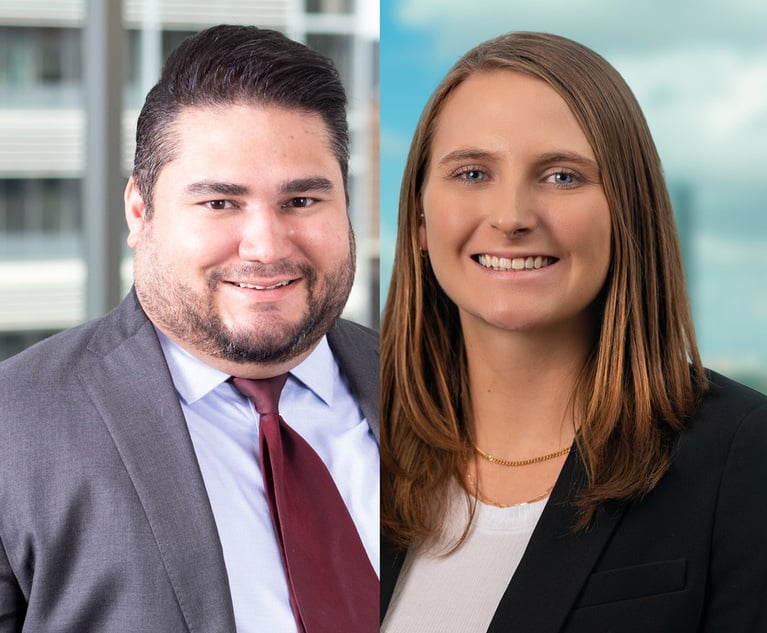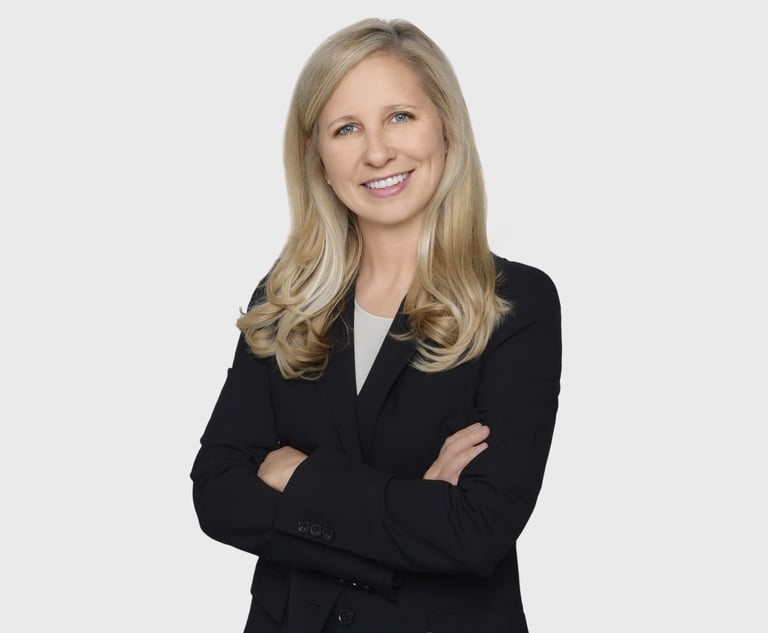New Lease Accounting Standards—What You Need to Know
Leasing is an integral part of the everyday activity of most businesses. A business may lease its premises consisting of offices, factories and warehouses. Additionally businesses often lease other assets including vehicles, office equipment and almost anything else that could be bought or purchased.
December 04, 2017 at 10:30 AM
6 minute read

Leasing is an integral part of the everyday activity of most businesses. A business may lease its premises consisting of offices, factories and warehouses. Additionally businesses often lease other assets including vehicles, office equipment and almost anything else that could be bought or purchased. The typical business enters into these leasing arrangements for both economic and financial presentation issues.
Leases of premises are generally entered into for economic reasons. Leases of premises often provide more flexibility by requiring low or minimal up-front payments and the flexibility to exercise options to stay or to leave at the end of the lease term.
Leases of equipment may be entered into for economic reasons or for financial presentation issues. Equipment and other similar leases provide a business the opportunity to rent or use an operating asset for a specified term and to then return and replace the asset with a potentially newer and better version at the end of the lease term. These leases when structured as operating leases are not reflected on the balance sheet and will generally not impede the ability of the business to obtain debt or other financing.
Lease accounting currently in effect is based on the standards first released in November 1976, with certain later amendments made. Lease accounting standards for nonpublic companies were changed drastically in February 2016, with an effective date for reporting periods beginning after Dec. 15, 2019.
This discussion will center on the lessee, or the company renting the property since most small and medium size businesses are those that rent property and equipment from others.
In the past, there were two kinds of leases. The first was a rental agreement in which rental payments were made and generally charged to expense when made. The slight exception to this was when there were scheduled rent increases and rent expense was recognized at the monthly average amount for each month of the lease resulting in different timing but the exact same expense over the lease term. This was called an operating lease.
The second type of leases was what many considered to be a financing contract that took the form of a lease but was generally the same for all intents and purposes as note payable for equipment. Typically these leases passed title to the lessee at the end of the lease at little or no consideration. This was called a capital lease. Other capital leases were for terms that generally used up 75 percent or more of the asset's life or paid for 90% or more of the leased asset's value.
The business recognized an asset and a liability under a capital lease and generally did not recognize an asset or liability under an operating lease. That is capital leases were presented on the balance sheet and operating leases were not presented on the balance sheet.
What Is New?
There will still be two kinds of leases and are referred to as finance leases and operating leases. Finance leases are similar to what was previously called a capital lease under the old standard. The second type of lease is an operating lease, however this operating lease is much different from the operating lease of the past.
Balance sheet recognition for all both financing and operating leases will now include a right-of-use asset and a lease liability. The right-of-use asset and the lease liability will be based on the present value of the required lease payments.
Income statement recognition will differ based on whether the lease is a finance lease or an operating lease. Finance leases will recognize amortization of the right-of-use asset and interest expense on the lease liability. Operating leases will recognize the lease cost as a single amount. (An exception exists for short-term leases, where a lessee may elect not to recognize a right-of-use asset and a lease liability, if such an election is made, the lease payments will be recognized as expense on a straight line basis over the lease term.)
It is important to realize that the reduction in the lease liability and the right of use asset in an operating lease will not be reduced in the same amount as the lease payment. This reduction will also not be equal to the lease expense.
Why Does the Business Owner Care?
The balance sheet will now reflect assets and liabilities that had not been previously recorded. The business' borrowing capacity may be reduced based on previously unrecorded lease liabilities.
Financial ratios will change. These changes include but are not limited to the debt to worth and other leverage ratios. The current ratio will also be affected. The current portion of the liability will be a current liability, while the entire right-of-use asset will be a non-current asset.
Perhaps most importantly definitions in debt covenants will need to be clarified and possibly revised. For example, whether a right to use asset is included in the calculation of tangible net worth.
As a business owner or adviser to a business, it is important that this new lease accounting standard be understood and provided for before entering into new borrowing arrangements. Two areas where it may be prudent to change business policies with regard to leasing are in financing negotiations including the debt covenants in the agreement, and the decision to buy or lease. Many leases have had higher “ownership costs” than an out-right purchase with debt financing but were still found to be desirable because of the accounting balance sheet treatment. It may be time to reconsider whether leasing, particularly of equipment will still be desirable.
Now is the time to begin to consider these questions because the balance sheets of nonpublic companies will be affected after Dec. 15, 2019.
Steven A. Moses is a certified public accountant and a partner at Gerson Preston in Miami.
This content has been archived. It is available through our partners, LexisNexis® and Bloomberg Law.
To view this content, please continue to their sites.
Not a Lexis Subscriber?
Subscribe Now
Not a Bloomberg Law Subscriber?
Subscribe Now
NOT FOR REPRINT
© 2025 ALM Global, LLC, All Rights Reserved. Request academic re-use from www.copyright.com. All other uses, submit a request to [email protected]. For more information visit Asset & Logo Licensing.
You Might Like
View All
Don’t Forget the Owner’s Manual: A Guide to Proving Liability Through Manufacturers’ Warnings and Instructions
5 minute read


Leveraging the Power of Local Chambers of Commerce: A Second-Career Lawyer’s Guide to Building a Thriving Practice
5 minute readTrending Stories
- 1Decision of the Day: Judge Dismisses Defamation Suit by New York Philharmonic Oboist Accused of Sexual Misconduct
- 2California Court Denies Apple's Motion to Strike Allegations in Gender Bias Class Action
- 3US DOJ Threatens to Prosecute Local Officials Who Don't Aid Immigration Enforcement
- 4Kirkland Is Entering a New Market. Will Its Rates Get a Warm Welcome?
- 5African Law Firm Investigated Over ‘AI-Generated’ Case References
Who Got The Work
J. Brugh Lower of Gibbons has entered an appearance for industrial equipment supplier Devco Corporation in a pending trademark infringement lawsuit. The suit, accusing the defendant of selling knock-off Graco products, was filed Dec. 18 in New Jersey District Court by Rivkin Radler on behalf of Graco Inc. and Graco Minnesota. The case, assigned to U.S. District Judge Zahid N. Quraishi, is 3:24-cv-11294, Graco Inc. et al v. Devco Corporation.
Who Got The Work
Rebecca Maller-Stein and Kent A. Yalowitz of Arnold & Porter Kaye Scholer have entered their appearances for Hanaco Venture Capital and its executives, Lior Prosor and David Frankel, in a pending securities lawsuit. The action, filed on Dec. 24 in New York Southern District Court by Zell, Aron & Co. on behalf of Goldeneye Advisors, accuses the defendants of negligently and fraudulently managing the plaintiff's $1 million investment. The case, assigned to U.S. District Judge Vernon S. Broderick, is 1:24-cv-09918, Goldeneye Advisors, LLC v. Hanaco Venture Capital, Ltd. et al.
Who Got The Work
Attorneys from A&O Shearman has stepped in as defense counsel for Toronto-Dominion Bank and other defendants in a pending securities class action. The suit, filed Dec. 11 in New York Southern District Court by Bleichmar Fonti & Auld, accuses the defendants of concealing the bank's 'pervasive' deficiencies in regards to its compliance with the Bank Secrecy Act and the quality of its anti-money laundering controls. The case, assigned to U.S. District Judge Arun Subramanian, is 1:24-cv-09445, Gonzalez v. The Toronto-Dominion Bank et al.
Who Got The Work
Crown Castle International, a Pennsylvania company providing shared communications infrastructure, has turned to Luke D. Wolf of Gordon Rees Scully Mansukhani to fend off a pending breach-of-contract lawsuit. The court action, filed Nov. 25 in Michigan Eastern District Court by Hooper Hathaway PC on behalf of The Town Residences LLC, accuses Crown Castle of failing to transfer approximately $30,000 in utility payments from T-Mobile in breach of a roof-top lease and assignment agreement. The case, assigned to U.S. District Judge Susan K. Declercq, is 2:24-cv-13131, The Town Residences LLC v. T-Mobile US, Inc. et al.
Who Got The Work
Wilfred P. Coronato and Daniel M. Schwartz of McCarter & English have stepped in as defense counsel to Electrolux Home Products Inc. in a pending product liability lawsuit. The court action, filed Nov. 26 in New York Eastern District Court by Poulos Lopiccolo PC and Nagel Rice LLP on behalf of David Stern, alleges that the defendant's refrigerators’ drawers and shelving repeatedly break and fall apart within months after purchase. The case, assigned to U.S. District Judge Joan M. Azrack, is 2:24-cv-08204, Stern v. Electrolux Home Products, Inc.
Featured Firms
Law Offices of Gary Martin Hays & Associates, P.C.
(470) 294-1674
Law Offices of Mark E. Salomone
(857) 444-6468
Smith & Hassler
(713) 739-1250






